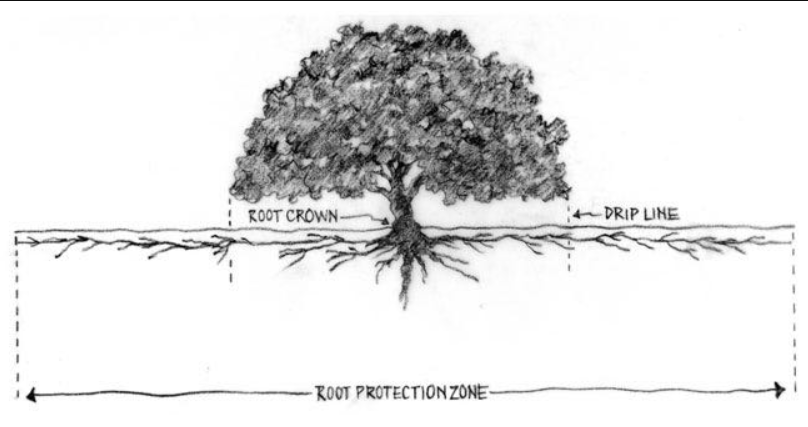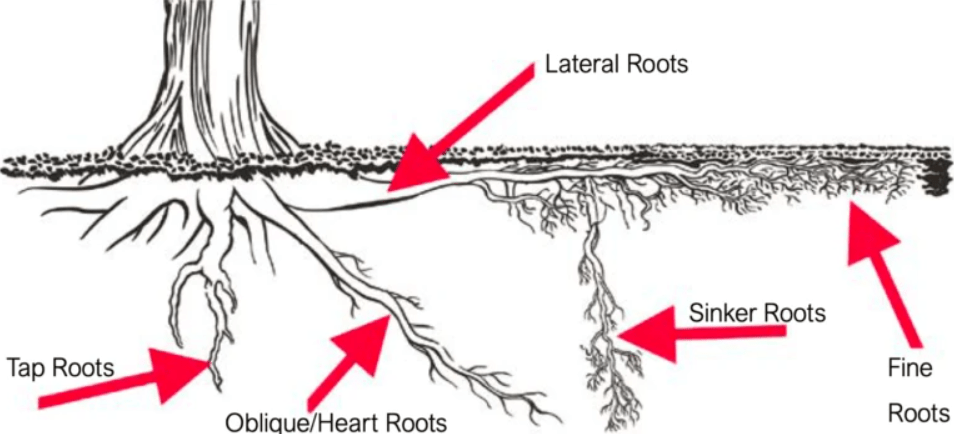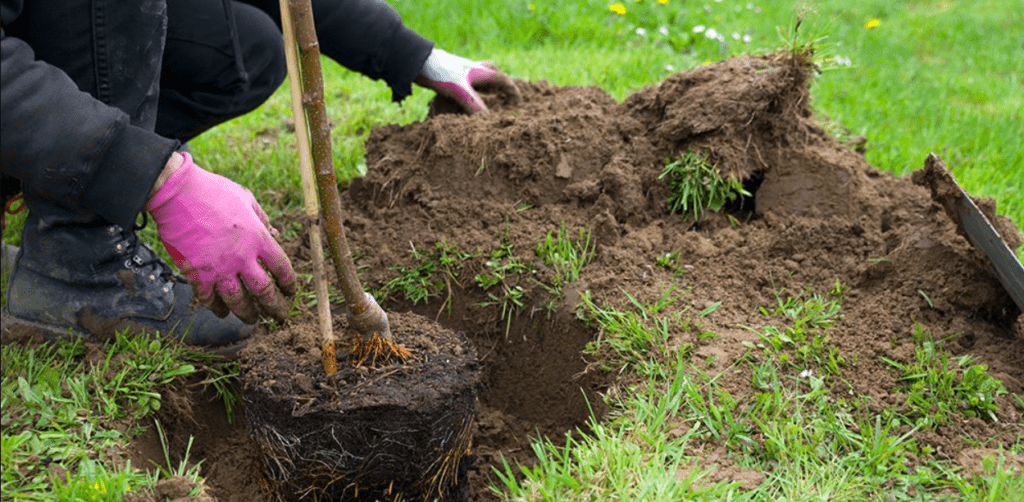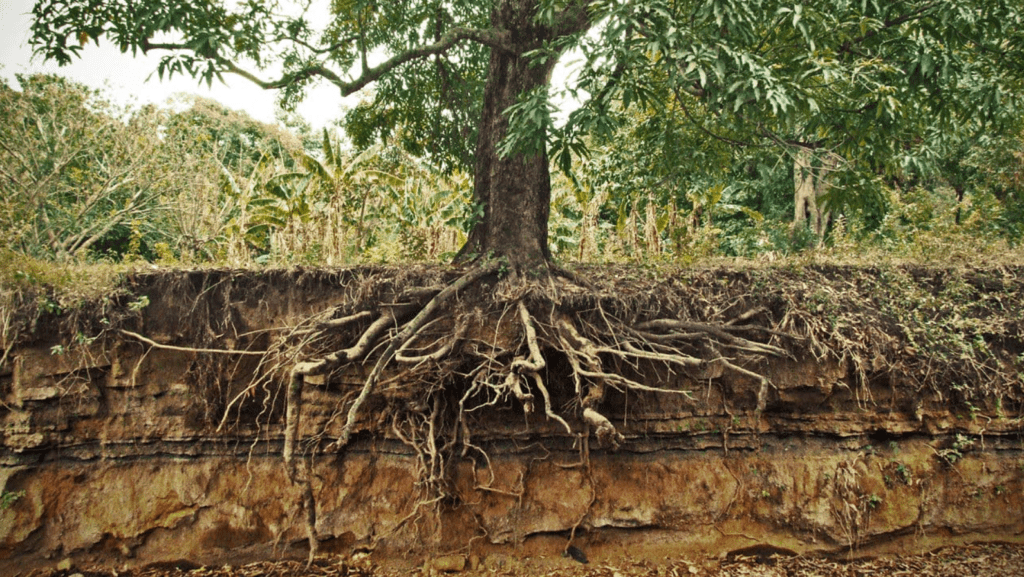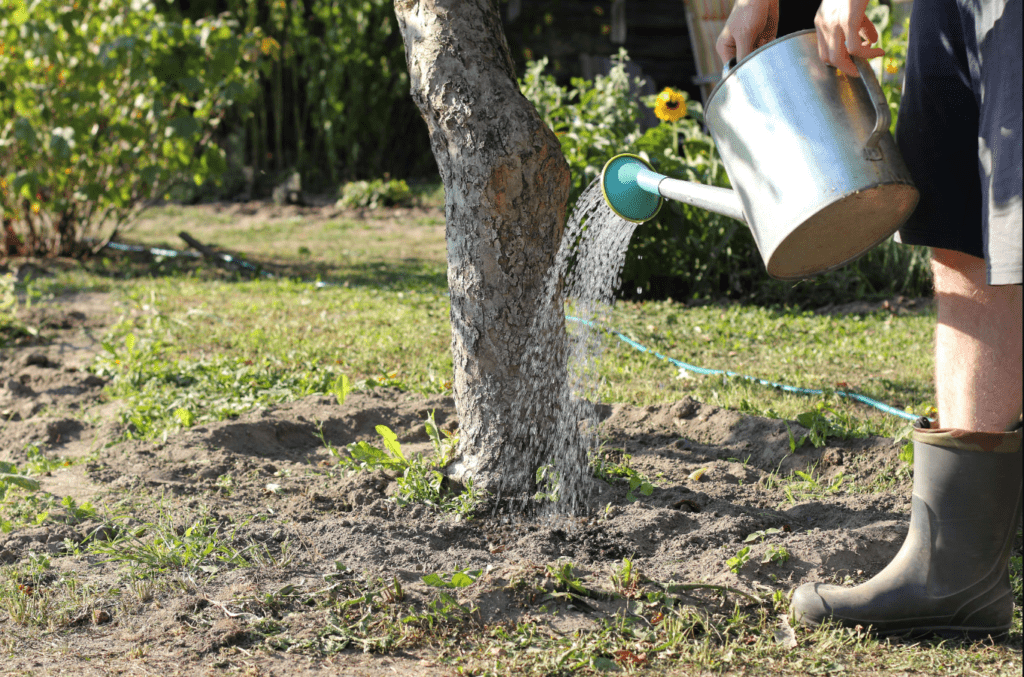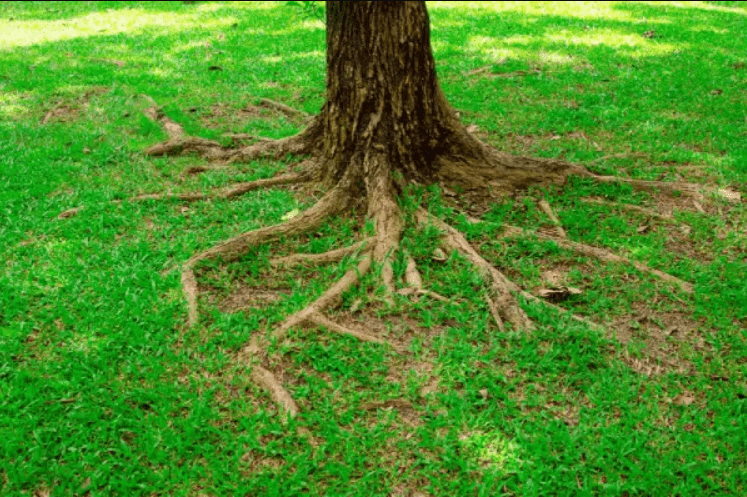
Exploring Trees with Shallow Roots: Understanding Their Impact and Importance
Trees with shallow roots play a significant role in the ecosystem, providing stability to the soil, preventing erosion, and offering habitat for various species. Trees are not only towering symbols of nature’s beauty but also complex organisms with intricate root systems beneath the surface. While some trees have deep-reaching roots that anchor them firmly into the ground, others possess shallow root systems that spread out horizontally near the soil surface.
Understanding the characteristics, benefits, and challenges of trees with shallow roots is crucial for landscape management and environmental conservation efforts. Understanding the impact and importance of these trees is crucial for environmental conservation and sustainable land management. In this article, we will delve into the significance of trees with shallow roots and how to care for them in your own environment. Join us as we explore the intricate world of these vital components of our natural surroundings.
Table of Contents
ToggleUnderstanding the Role of Trees with Shallow Roots in the Ecosystem
While deep-rooted trees get much of the credit for anchoring soil and providing vital resources, shallow-rooted trees play a surprisingly crucial role in maintaining healthy ecosystems. Their root networks, concentrated in the upper layers of the soil, contribute significantly to various ecological processes.
Benefits to Soil Health:
- Erosion Control: The web of shallow roots acts like a natural barrier, binding soil particles together and preventing them from washing away during heavy rains. This helps maintain healthy soil structure and prevents valuable nutrients from being lost.
- Nutrient Cycling: As shallow roots decompose, they release essential nutrients like phosphorus and nitrogen back into the soil, making them readily available for other plants in the ecosystem. This continuous cycling process promotes a fertile and diverse plant community.
- Improved Water Infiltration: Shallow roots create channels in the soil, allowing rainwater to infiltrate more efficiently. This reduces runoff and ensures water reaches the plant roots where it’s most needed.
Supporting a Diverse Ecosystem:
- Habitat for Specialized Species: The unique microclimate created by the shallow root network provides habitat for specific types of insects and fungi that wouldn’t thrive near deep-rooted trees. This fosters biodiversity and a healthy balance within the ecosystem.
- Food Source for Wildlife: Many shallow-rooted trees produce fruits and berries that are a valuable food source for birds and small mammals. This helps sustain these creatures and contributes to the overall food web within the ecosystem.
Partnering with Deep-Rooted Trees:
- Complementary Roles: Shallow and deep-rooted trees don’t compete, but rather complement each other. Shallow-rooted trees utilize readily available nutrients and water near the surface, while deep-rooted trees tap into deeper water reserves. This creates a more efficient use of resources within the ecosystem.
- Successional Planting: In natural ecosystems, shallow-rooted trees can play a role in succession. Following disturbances like fire, fast-growing shallow-rooted trees can stabilize the soil and provide initial shade, allowing deeper-rooted trees to establish themselves over time.
Characteristics of Trees with Shallow Roots
Shallow-rooted trees, as the name suggests, have root systems that extend horizontally rather than vertically into the soil. These root systems typically spread out near the surface, often within the top few inches or feet of the soil layer. Factors such as soil composition, moisture levels, and available nutrients influence the depth and spread of shallow roots. Common tree species with shallow roots include maple, birch, willow, and certain types of oak.
Benefits of Shallow-Rooted Trees
Despite their limited root depth, shallow-rooted trees offer several benefits to the ecosystem and urban environments. One of their primary advantages is soil stabilization and erosion control. The extensive network of shallow roots helps hold soil in place, preventing erosion and reducing the risk of landslides, particularly in sloped areas. Additionally, shallow-rooted trees are well-suited for urban environments where space for root growth may be limited. Their ability to thrive in compacted soils and withstand urban stressors such as pollution and pavement makes them valuable assets in urban greening initiatives.
Impact of Trees with Shallow Roots on Soil and Water Conservation
Deep-rooted trees often steal the show when it comes to soil and water conservation. However, their shallow-rooted counterparts play a vital, and sometimes underappreciated, role in maintaining healthy ecosystems. Let’s delve into the ways shallow-rooted trees act as guardians of our soil and water resources.
Champions of Soil Stability:
- Erosion Blockers: Unlike their deep-rooted brethren, shallow-rooted trees focus their root network in the upper soil layers. This dense web acts like a natural armor, binding soil particles together and preventing them from being washed away by heavy rains. This helps prevent soil erosion, a major threat to fertile land and healthy ecosystems.
- Nutrient Recyclers: As shallow roots decompose over time, they release essential nutrients like nitrogen and phosphorus back into the topsoil. This continuous “recycling” process ensures a readily available supply of nutrients for other plants, promoting a diverse and thriving plant community.
Guardians of the Water Cycle:
- Infiltration Specialists: The intricate network of shallow roots creates channels and pathways within the soil. These channels allow rainwater to infiltrate the ground more efficiently, reducing surface runoff. This infiltrated water becomes readily available for plant uptake and replenishes groundwater reserves.
- Moisture Managers: The leaves of shallow-rooted trees often cast shade on the ground, reducing soil evaporation. This helps conserve valuable moisture in the upper soil layers, particularly beneficial during dry periods.
Additional Considerations:
- Partners, not Rivals: Shallow and deep-rooted trees don’t compete for resources, but rather complement each other. Shallow-rooted trees utilize readily available water and nutrients near the surface, while deep-rooted trees tap into deeper reserves. This creates a more efficient and balanced use of resources within the ecosystem.
- Limitations to Address: Shallow-rooted trees are generally less drought-tolerant than deep-rooted trees due to their limited access to deeper water sources. This factor needs to be considered when planting in areas prone to water scarcity. Additionally, shallow roots are more susceptible to damage from compacted soil, which can hinder their ability to absorb water and nutrients.
Importance of Caring for Trees with Shallow Roots in Urban Environments
Cityscapes are often dominated by concrete and glass, but trees, particularly those with shallow roots, play a crucial role in creating a healthy and sustainable urban environment. While their deep-rooted cousins might get more attention, caring for shallow-rooted trees offers unique advantages and deserves our focus.
Benefits of Shallow-Rooted Trees in Urban Areas:
- Space Savers: Shallow root systems make these trees ideal for urban landscapes with limited space, like sidewalks, plazas, or parking lot medians. They can add a touch of nature and greenery without posing a threat to underground structures.
- Stormwater Heroes: During heavy rains, shallow roots help absorb stormwater runoff, reducing the burden on drainage systems and preventing flash floods. This is particularly important in densely populated areas with high volumes of rainwater runoff.
- Climate Regulators: Trees, including shallow-rooted ones, provide much-needed shade in urban heat islands. This shade lowers ambient temperatures, reduces energy consumption for cooling buildings, and creates a more comfortable outdoor environment for city dwellers.
- Pollution Fighters: Trees act as natural air filters, absorbing pollutants released by vehicles and industries. Shallow-rooted trees, with their dense foliage near pedestrian walkways, can be particularly effective in capturing pollutants at the breathing level.
Challenges and Care Considerations:
- Soil Compaction: Urban environments often have compacted soil due to construction and heavy traffic. This can restrict root growth and water infiltration for shallow-rooted trees. Regularly aerating the soil around these trees can help alleviate compaction and improve root health.
- Limited Water Access: Paved surfaces and limited rain gardens can make it difficult for shallow-rooted trees to access sufficient water. Regular watering, especially during hot and dry periods, is crucial for their survival.
- Salt Damage: Deicing salts used on roads in winter can harm shallow roots. Planting salt-tolerant species and mulching around the base of the tree can help mitigate this issue.
Investing in a Sustainable Future:
By properly caring for shallow-rooted trees in urban environments, we’re investing in a healthier and more sustainable future for our cities. These trees not only beautify our surroundings but also contribute to cleaner air, cooler temperatures, improved stormwater management, and a more vibrant urban ecosystem.
What You Can Do:
- Advocate for planting shallow-rooted trees in your community.
- Volunteer with tree planting or care initiatives.
- Learn to identify shallow-rooted tree species suitable for your area.
- Water young trees during dry periods, especially during the first few years after planting.
By taking these steps, we can ensure that shallow-rooted trees continue to thrive in our cities, offering their unique benefits for generations to come.
Tips for Caring for Trees with Shallow Roots in Your Own Environment
Caring for trees with shallow roots can have several benefits for both the tree and the surrounding environment. By providing proper care and support to these trees, you can help them thrive and continue to provide important ecological benefits such as shade, oxygen production, and soil stabilization. Additionally, healthy trees can enhance the beauty and overall well-being of the environment, making it a more pleasant and sustainable place for everyone.
Shallow-rooted trees often get overshadowed by their deep-rooted counterparts. But these underappreciated beauties bring a wealth of benefits to your landscape, requiring just a touch of extra care to thrive. Here are some tips to ensure your shallow-rooted trees flourish in your own environment:
Planting Wisely:
- Pick the Perfect Spot: Consider mature size and root spread. Avoid planting too close to structures or foundations (at least 6-8 feet away). Opt for well-drained areas to prevent root rot.
- Soil Preparation is Key: Amending the soil with compost or organic matter improves drainage and nutrient availability for healthy root growth.
Watering Right:
- Regularity is Crucial: Shallow-rooted trees are more susceptible to drought. Water deeply and regularly, especially during the first few years after planting and during hot, dry periods.
- Mulch Matters: Apply a 2-3 inch layer of mulch around the base of the tree (but keep it a few inches away from the trunk) to retain moisture, suppress weeds, and regulate soil temperature.
Helping Roots Breathe:
- Beware of Compaction: Compacted soil suffocates roots. Avoid excessive foot traffic around the tree. Consider aerating the soil every few years with a core aerator.
Keeping Up with Maintenance:
- Prune for Health: Prune dead, diseased, or overcrowded branches to promote healthy growth and improve air circulation.
- Fertilize, but Not Too Much: Overfertilizing can harm shallow roots. Consult a local nursery professional for recommendations on fertilizer type and amount specific to your tree species and soil conditions.
Addressing Urban Challenges:
- Salt Stress: If you live in an area with winter salt application, choose salt-tolerant shallow-rooted tree species. Mulching around the base can also help protect the roots from salt damage.
Remember:
- Observe and Adapt: Pay attention to your tree’s health. Signs of stress like wilting or leaf scorch might indicate insufficient watering. Adjust your care routine accordingly.
- Right Tree, Right Place: Research suitable shallow-rooted tree species for your climate and available space. Many beautiful options exist, from flowering crepe myrtles to vibrant dogwoods.
By following these tips, you can create a nurturing environment for your shallow-rooted trees, allowing them to grace your landscape with their beauty and contribute to a healthier ecosystem for years to come.
The Future of Trees with Shallow Roots: Conservation and Preservation Efforts
Trees with shallow roots are integral components of ecosystems, providing numerous benefits to the environment and society. However, these trees face increasing threats from urbanization, climate change, and habitat degradation. The future of shallow-rooted trees depends on proactive conservation and preservation efforts to safeguard their ecosystems and ensure their continued survival.
Understanding the Threats
- Urbanization and habitat loss: Rapid urban development encroaches on natural habitats, leading to the destruction of shallow-rooted trees’ habitats and fragmentation of ecosystems.
- Climate change: Changing climatic conditions, including rising temperatures, altered precipitation patterns, and extreme weather events, pose significant challenges to shallow-rooted trees’ resilience and survival.
- Invasive species and pests: Introduced invasive species and pests can outcompete native vegetation, disrupt ecosystem dynamics, and pose direct threats to shallow-rooted trees’ health and vitality.
Conservation Strategies
- Habitat preservation: Protecting and preserving natural habitats through land conservation initiatives, protected area designation, and habitat restoration projects are essential for maintaining healthy populations of shallow-rooted trees.
- Urban forestry: Implementing urban forestry programs, green infrastructure projects, and tree planting initiatives in urban areas can enhance the resilience of shallow-rooted trees in urban environments and mitigate the adverse effects of urbanization.
- Species-specific conservation efforts: Targeted conservation efforts for endangered or threatened species of shallow-rooted trees, including habitat restoration, captive breeding programs, and genetic conservation measures, are crucial for their long-term survival.
Sustainable Land Management Practices
- Sustainable land management: Promoting sustainable land management practices, such as agroforestry, silvopasture, and sustainable agriculture, can integrate shallow-rooted trees into productive landscapes while preserving ecosystem integrity and biodiversity.
- Soil conservation measures: Implementing soil conservation measures, such as erosion control, soil stabilization, and soil improvement techniques, can protect shallow-rooted trees’ habitats and ensure the health of the surrounding ecosystem.
Public Awareness and Education
- Public outreach: Raising public awareness about the importance of shallow-rooted trees and the threats they face is crucial for garnering support for conservation efforts and promoting sustainable land management practices.
- Environmental education: Incorporating environmental education programs into school curricula, community outreach initiatives, and public awareness campaigns can foster a deeper understanding and appreciation of shallow-rooted trees and their role in ecosystems.
Collaborative Partnerships and Research
- Collaborative partnerships: Establishing partnerships between government agencies, non-profit organizations, academic institutions, and local communities can leverage resources, expertise, and collective action to address conservation challenges and implement effective management strategies.
- Research and monitoring: Investing in research and monitoring programs to better understand the ecology, physiology, and conservation needs of shallow-rooted trees.
In conclusion, trees with shallow roots play a crucial role in stabilizing soil, preventing erosion, and providing habitat for various species. It’s important to understand their impact and take care of them in your environment to maintain a healthy ecosystem. By learning more about these trees and their importance, we can better appreciate and protect them for future generations.
Frequently Asked Questions (FAQ)
Shallow-rooted trees are tree species with root systems that spread horizontally near the soil surface rather than penetrating deeply into the ground.
Common examples of shallow-rooted trees include maple, birch, willow, certain types of oak, and fruit trees like apple and cherry.
Shallow-rooted trees provide soil stabilization and erosion control, thrive in urban environments with limited space, and contribute to urban greening efforts.
Shallow-rooted trees are susceptible to drought and soil moisture fluctuations, as well as root damage from mechanical injuries, soil compaction, and construction activities.
Care for shallow-rooted trees by selecting appropriate tree species for your soil and climate conditions, practicing proper planting techniques, and implementing mulching and soil amendments to improve soil health.
Yes, shallow-rooted trees are well-suited for urban environments due to their ability to thrive in compacted soils and withstand urban stressors such as pollution and pavement.
Planting shallow-rooted trees along slopes and waterways can help prevent soil erosion by stabilizing the soil with their extensive root systems.
While shallow-rooted trees may be more susceptible to wind damage than deep-rooted trees, proper pruning and maintenance can help improve tree stability and reduce the risk of wind-related issues.
Care should be taken when planting shallow-rooted trees near buildings or infrastructure, as their roots may cause damage to foundations, sidewalks, and underground utilities over time. Consult with a professional arborist or landscape architect for guidance on appropriate tree selection and planting distances.
Shallow-rooted trees often exhibit characteristics such as surface roots, shallow planting depth, and a tendency to produce suckers or sprouts from the base of the trunk. Consulting with local experts or using online resources can help you identify shallow-rooted trees common to your region.

